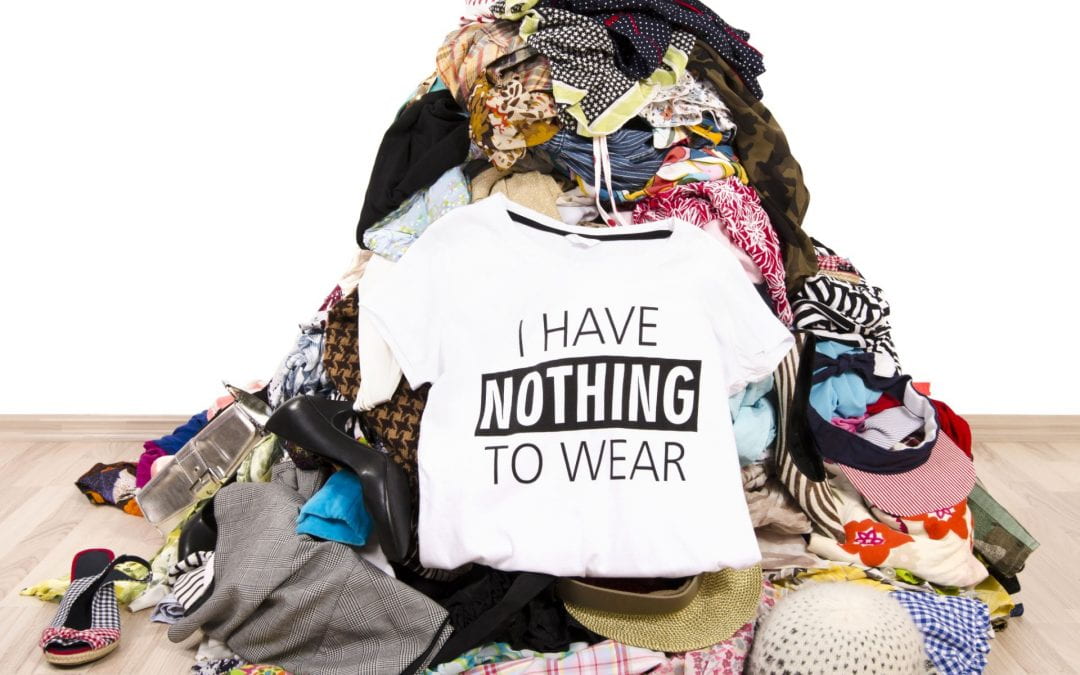Our generation is pro-environmentalism, and supports civil rights and gender equality. We support and believe in a great deal of things. But, how often do our actions truly support our beliefs? What exactly are we doing to ensure all that we do believe in can, one day, become reality? The answer to that question, I think, is not so unrelated to how we shop for clothes.
Although most of us, including me, are generally aware of the negative consequences associated with our clothing consumption, we rarely go out of our way to align our purchases with our values. When asked about the environmental impacts of fast fashion and their shopping habits in a survey, one student answered, “just recently I purchased a cocktail dress for my friend’s wedding party. I saw a similar dress at Marc Jacobs—a velvet beaded dress—but I bought this one at [a fast fashion store] for a fraction of the price. It may not be premium quality, but it is a trendy piece and very affordable!” Lara, another student, noted, “it is cheap chic—it is a trend worth buying into. I visit [a fast fashion store] twice a month and if I see something, I buy it” (Joy, 2012).
It’s almost an airtight argument. Indeed, why should we pay more for something that we can find at a lower price? But, it all comes back to how we reconcile our consumption of fast fashion with our values, which are in total diametric opposition? We bought 60% more garments in 2014 than in 2000, and we are dumping 85% of those each year (Remy, Speelman, & Swartz, 2016). The fashion industry makes up 10% of our carbon footprint, but with the rate at which we are buying and dumping clothes, that number will certainly increase.
But it is not only the environment that the fast fashion industry is ravaging. Millions of women across the world are being exploited in textile factories, working long hours under hazardous conditions for unlivable wages. Approximately 80% of the people working in those factories are women earning less than $3 a day. These mostly young, uneducated, and rural migrant women are targeted by factory owners because they lack a political voice. It is exactly this exploitation that fast fashion profits from. Our response? Making it clear to everybody that we are feminists by wearing t-shirts with “Girl Power” written on them, t-shirts produced in the same factories that exploit millions of women every day. Why do we keep buying fast fashion despite our full knowledge of its negative impact on almost everything we believe in and hold dear?
Fast fashion offers us the most-up-to-date designs and makes it affordable to express our “continually evolving temporary identities” (Baumann, 2005). With fast fashion, new styles quickly replace the old, “defining and sustaining constantly emerging desires and notions of self” (Joy, 2012). The constant evolution of our “liquid” selves is what Binkley argues is central to fast fashion (Binkley, 2008). Identity, in our postmodern society, is what Baumann claims “is an endlessly cultivated and optimized polyvalency of mobility, a skilled adaptability to a permanent state of ambivalence” (Baumann, 2005). And we feed off this ambivalence to recreate our identities, and our evolving selves have no doubt become reflections of “changing fashion styles created by fast fashion” (Joy, 2012). In this sense, our consumerism of fast or any other fashion reveals something much more sinister: we shop parts of our identities, ideologies and values like they are on the sale rack on Black Friday and throw them away when they go out of style. We make our beliefs and values abundantly clear to people around us, and we do, from time to time, act on them, as if to offer ourselves small tokens of our commitment.
We are not doing this with bad intentions at heart. But this behavior is not isolated: it extends to other parts of our lives, making us see and evaluate everything as objects of consumption, not unlike that with which we buy clothes. The fast fashion marketplace has become for us what is an interesting modification by Bauman of Hamlet’s answer to the King’s inquiry about Polonius’s whereabouts: A place ‘where he eats’ and ‘where he is eaten’ (Baumann, 2005). As we consume fast fashion, it consumes us. But is it a symptom, or the disease itself?
References
Baumann, Z. (2005). Liquid Life. Cambridge: Polity Press.
Binkley, S. (2008). Liquid Consumption. Cultural Studies, 22(5), 599-623.
Joy, A. e. (2012). “Fast fashion, sustainability, and the ethical appeal of luxury brands.”. Fashion Theory, 16(3), 273-295.
Remy, N., Speelman, E., & Swartz, S. (2016, October 20). Style that’s sustainable: A new fast-fashion formula. Retrieved September 12, 2020, from https://www.mckinsey.com/business-functions/sustainability/our-insights/style-thats-sustainable-a-new-fast-fashion-formula
